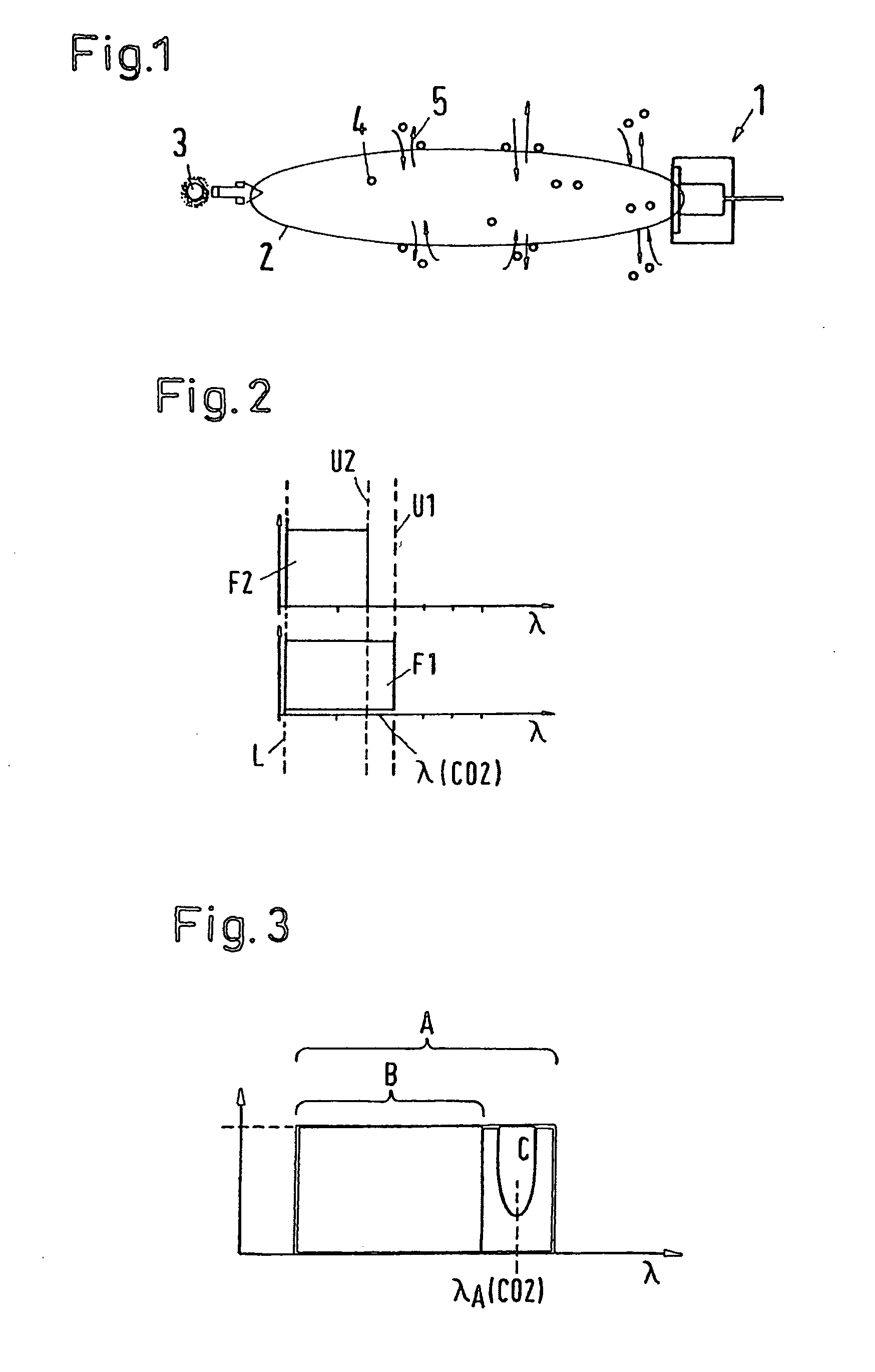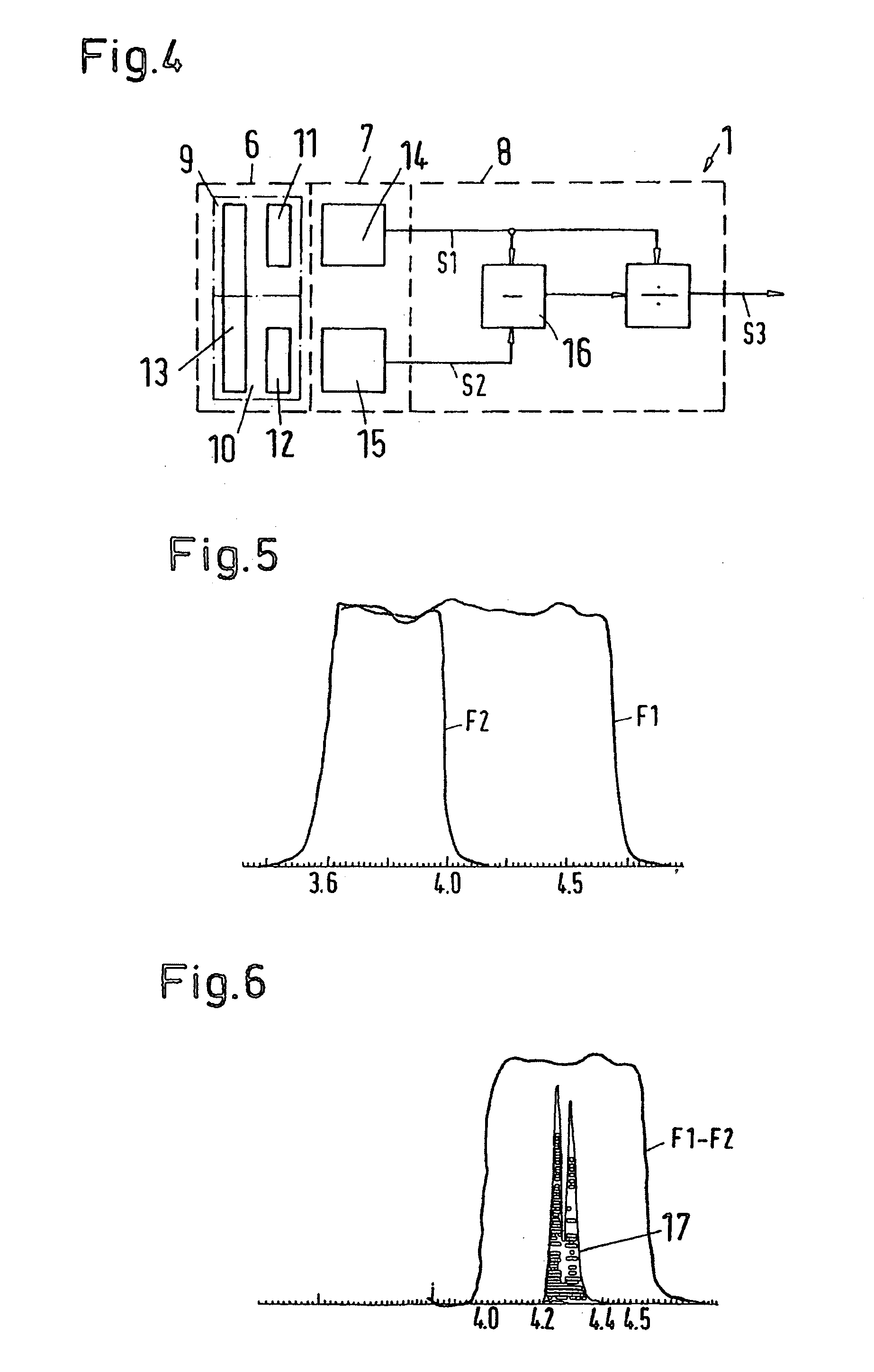Ir Sensor, Especially a Co2 Sensor
a co2 sensor and sensor technology, applied in the field of ir sensors, can solve the problems of unsuitable battery-operated use, unsatisfactory measurement results, and high power requirements, and achieve the effect of facilitating monitoring and establishment of a “personal room climate” or the indoor air quality, and improving measurement results
- Summary
- Abstract
- Description
- Claims
- Application Information
AI Technical Summary
Benefits of technology
Problems solved by technology
Method used
Image
Examples
Embodiment Construction
[0029]FIG. 1 shows a diagrammatic view of a gas sensor 1 for determining the CO2 content (carbon dioxide content) in a measurement region 2. The measurement region may be, for example, a room or the portion of a room in which the personal room climate is to be regulated. A sun symbol 3 represents a natural IR source. The sun symbol 3 serves here merely for explanation purposes. The gas sensor 1 also operates in the absence of sunlight, because in principle virtually any body radiates heat and thus generates IR rays.
[0030]A large number of CO2 molecules are present in the measurement region 2, the CO2 molecules being represented herein by small circles. The gas molecules 4 absorb IR rays in a specific spectral range, as represented by arrows 5. The greater the concentration of CO2, the lower the energy in a specific spectral range that can be detected in the gas sensor 1.
[0031]FIG. 4 shows, in diagrammatic form, a block circuit diagram for explaining the structure of the gas sensor 1...
PUM
| Property | Measurement | Unit |
|---|---|---|
| distance | aaaaa | aaaaa |
| cut-off wavelength | aaaaa | aaaaa |
| start wavelength | aaaaa | aaaaa |
Abstract
Description
Claims
Application Information
 Login to View More
Login to View More - R&D
- Intellectual Property
- Life Sciences
- Materials
- Tech Scout
- Unparalleled Data Quality
- Higher Quality Content
- 60% Fewer Hallucinations
Browse by: Latest US Patents, China's latest patents, Technical Efficacy Thesaurus, Application Domain, Technology Topic, Popular Technical Reports.
© 2025 PatSnap. All rights reserved.Legal|Privacy policy|Modern Slavery Act Transparency Statement|Sitemap|About US| Contact US: help@patsnap.com



